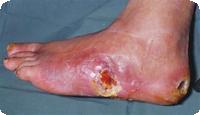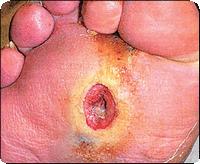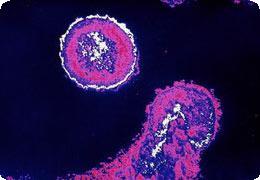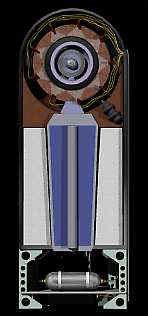give your pet another thinking ..!!!
February 25, 2008 at 1:49 am | Posted in diseases, drugs, news | Leave a commentPicking up an E. coli bug from your pet might lead to a urinary tract infection, according to Minneapolis-based researchers.
“Sharing
of E. coli strains among humans and pets within a household, including
strains that can cause urinary tract infections, is extremely common,”
Dr. James R. Johnson told Reuters Health.
Harboring the same strain of the bug implies that it is passed from one person or animal to another.
Johnson and his colleagues at the University of Minnesota
investigated the extent to which E. coli strains were shared between
humans and pets in 63 households. They identified 152 people, 48 dogs,
26 cats, and 2 other animals that had stool samples that tested
positive for E. coli. Five of the humans had an acute urinary tract
infection.
In the Journal of Infectious Diseases, the researchers
report that the same strain of E. coli was shared by several of the
inhabitants within a household in 68 percent of the domiciles. That
included three of the five households in which one person had a urinary
tract infection.
Given the high rate of E. coli strain sharing,
Johnson concluded: “If future research shows that this process
increases the risk of urinary tract infection for household members,
this could lead to new options for preventing such infections.”
SOURCE: Journal of Infectious Diseases, January 15, 2008.
gene and diabetes … Study
February 25, 2008 at 1:47 am | Posted in diseases, news | 2 CommentsChina (Reuters) – Chinese scientists are trying to find out which
errant genes are responsible for diabetes and certain forms of cancer
that have long plagued Chinese populations, a geneticist said.
Rising
affluence, richer diets and a sedentary lifestyle have led to an
alarming rise in cases of diabetes in China in recent decades, while
cancers of the esophagus, lungs, breast, stomach and colon have plagued
Chinese people for a much longer time.
The partly state-funded
Beijing Genomics Institute (BGI), which completed the mapping out of
the first Chinese human genome in 2007, is trying to figure out which
genes may be responsible for these chronic and even terminal illnesses.
“We are doing disease gene mapping, to find causal (gene)
variants for certain diseases in Chinese populations,” said Gao Yang,
vice general manager of BGI’s Shenzhen branch, which was mainly
responsible for the sequencing of the first Chinese genome.
“We are most interested in diabetes and five types of cancer.”
BGI is collaborating with Chinese hospitals on the cancer project and foreign institutions on diabetes.
“We will be sequencing DNA samples provided by hospitals,” Gao told Reuters in a weekend interview .
Chinese doctors now rely on western data when making diagnoses and
deciding on drug protocols, which Gao said was far from ideal.
“When
deciding how to administer drugs to a Chinese breast cancer patient,
for example, it’s important to consider her genetic makeup. From
diagnosis to drug dosage, it may be a very different story,” said Gao.
“With
our own data, we can have personalized medicine. Even if it’s the same
disease, you may need a different drug or dosage if you have a
different genetic makeup.”
SEQUENCING THE PANDA GENOME
The institute is currently mapping out the genome of China’s
giant panda. “We may use the information to better protect this
endangered species and understand its evolution,” said Gao.
The
institute also has its eye on a few infectious agents, such as the
Hepatitis B and human papilloma viruses (HPV) that are especially
problematic for Chinese populations — although a better or faster cure
may be decades away.
Asia is largely ignorant about Hepatitis B,
the 10th leading cause of death worldwide. Chronic Hepatitis B affects
360 million people globally, and of these, 281 million are in Asia.
One in four will die from either cirrhosis, or scarring of the liver, or liver cancer later in life.
HPV is a major cause of cervical cancer.
“We want to develop
better (and less expensive) detection tools. For now, HPV detection
kits are very expensive and HPV infections mainly take place in poorer
areas,” Gao said.
“As for Hepatitis B virus, drug resistance is
serious, so we need to design more sensitive and cost effective
diagnostic tools. By sequencing the virus, we can see how it is
mutating, so that better drugs can be designed,” he said.
Experts
say 10 percent of China’s more than 1.3 billion population carry the
Hepatitis B virus, with the figure reaching as high as 16 percent in
certain parts in the south.
Diabetic foot
February 18, 2008 at 5:08 pm | Posted in diseases | 2 CommentsTags: Diabetic foot, diseases, foot, gangrena, ill, MD, mellitus, sepsis, sugar illness, surgery, treatmen

General Information
Not all people with diabetes develop foot problems. In many cases serious problems can be prevented by an understanding of what can happen to feet and how to take care of them.
What are the types of diabetic foot problems?
People with diabetes are more prone to infection. They can also develop neuropathy (damaged nerves) or peripheral vascular disease (blocked arteries) of the legs and either can lead to foot ulceration. Infection and foot ulceration, alone or in combination, often lead to amputation. This happens to about 3000 people in Australia each year. Neuropathy and peripheral vascular disease can also cause distressing pain in the lower limbs.
Can diabetic foot problems be prevented?
Theoretically, if diabetes is well controlled it should be possible to avoid these foot problems. However, as it is not always possible to achieve good diabetic control and as severe neuropathy and peripheral vascular disease cannot be easily reversed, many people with diabetes are at risk of developing foot problems. Therefore it is important to know how best to minimize the risk of foot problems and how best to treat them.
What are the steps that can be taken to prevent or treat foot problems?
Good diabetic control is always helpful. However, by itself, it is often not enough.
For people with diabetes who have not yet developed active infection or ulceration, the important thing is to grade the degree of risk and then to provide them with appropriate foot care education to minimize the risk of developing active foot problems.
For people already with infection or ulceration, the important thing is to urgently treat the infection and heal the ulcer. The treatment required for ulceration due to neuropathy or peripheral vascular disease may be quite different. Therefore it is necessary to distinguish the different types.
For people with pain, the important thing is to determine whether it is due to neuropathy or vascular disease because the treatment is again quite different.
Cure For HIV
February 16, 2008 at 5:50 pm | Posted in diseases, drugs, news | 1 CommentTags: AIDS, choice, cure, death, diseases, durg, HIV, hope, life, vaccine

Even the best drugs currently available cannot weed out HIV from all of its hiding places within the body, according to a new study of HIV patients in the United States. The discovery seems to confirm doctors’ suspicions that once the virus gains a foothold, it can never be fully eradicated from the body.
After years of aggressive drug treatment, the virus still hides out in significant reservoirs, particularly in tissues surrounding the gut lining, the researchers report. Cells in these tissues, a part of the immune system called ’gut-associated lymphoid tissue’, remain infected with the virus even though the patient may be leading an apparently healthy life.
Many HIV patients can manage their infection with a cocktail of drugs called antiretroviral therapies (ARTs). These can reduce their ’viral load’ – the amount of virus circulating in the blood plasma – to undetectable levels.
But the new study shows that even in such ’non-infectious’ patients the virus is still lurking in gut tissues, and still infecting other immune cells in the blood.
"It might not ever be possible to completely eradicate the virus from the body, even though people are doing well," says Anthony Fauci, director of the US National Institute of Allergy and Infectious Diseases in Bethesda, Maryland, who led the research. He adds, however, that this doesn’t mean that patients will be more likely than previously thought to pass on the virus to others.
Incurable
The finding underlines HIV’s status as an ’incurable’ infection, although in many cases doctors are able to stave off the onset of full-blown AIDS by giving patients sustained courses of drugs.
Indeed, so effective are current drugs that most say…
Nuclear weapons part ||
February 11, 2008 at 8:07 pm | Posted in blogging, nuclear, war, weapons | 1 CommentTags: destruction
Fusion weapons
Fission weapons discussed above are ultimately limited in their destructive capability by the sheer size a subcritical mass can assume — and be imploded quickly enough by high explosives to form a supercritical assembly. The largest known pure fission weapon tested had a 500 kiloton yield. This is some thirty-eight times the release which destroyed Hiroshima in 1945. Not satisfied that this was powerful enough, designers developed thermonuclear (fusion) weapons.
Fusion exploits the energy released in the fusing of two atoms to form a new element; e.g. deuterium atoms fusing to form helium, 2H + 2H = 4He2 , as occurs on the sun. For atoms to fuse, very high temperatures and pressures are required. Only fusion of the lightest element, hydrogen, has proven practical. And only the heavy isotopes of hydrogen, 2H (deuterium) and 3H (tritium), have a low enough threshold for fusion to have been used in weapons successfully thus far.
The first method tried (boosting) involved simply placing 3H in a void within the center of a fission weapon, where tremendous temperatures and high pressures were attendant to the fission explosion. This worked; contributing energy to the overall explosion, and boosting the efficiency of the Pu fissioning as well (fusion reactions also release neutrons, but with much higher energy).
Because 3H is a gas at room temperature, it can be easily ’bled’ into the central cavity from a storage bottle prior to an explosion, and impact the final yield of the device. This is still used today, and allows for what is termed ’dial-a-yield’ capability on many stockpiled weapons.
Multistage thermonuclear weapons — the main component of today’s strategic nuclear forces — are more complex. These employ a ’primary’ fission weapon to serve merely as a trigger. As mentioned above, the fission weapon is characterized by a tremendous energy release in a small space over a short period of time. As a result, a very large fraction of the initial energy release is in the form of thermal X-rays.
These X-rays are channeled to a ’secondary’ fusion package. The X-rays travel into a cavity within a  cylindrical radiation container.
cylindrical radiation container.
The radiation pressure from these X-rays either directly, or through an intermediate material often cited as a polystyrene foam, ablates a cylindrical enclosure containing thermonuclear fuel (shown in blue at left); this can be Li2H (lithium deuteride).
Running along the central axis of this fuel is a rod of fissile material, termed a ’sparkplug’.
The contracting fuel package becomes denser, the sparkplug begins to fission, neutrons from this transmute the Li2H into 3H that can readily fuse with 2H (the fusion reaction 3H + 2H has a very high cross-section, or probability, in typical secondary designs), heat increases greatly, and fusion continues through the fuel mass.
A final ’tertiary’ stage can be added to this in the form of an exterior blanket of 238U, wrapping the outer surface of the radiation case or the fuel package. 238U is not fissionable by the slower neutrons which dominate the fission weapon environment, but fusion releases copious high energy neutrons and this can fast fission the ordinary uranium.
This is a cheap (and radiologically very dirty) way to greatly increase yield. The largest weapon ever detonated — the Soviet Union’s ’super bomb’, was some 60 MT in yield, and would have been nearer 100MT had this technique been used in its tertiary. Again, to control the yield precisely, 3H may be bled from a separate tank into the core of the primary, as shown in the hypothetical diagram on the left of a modern thermonuclear weapon.
This primary/secondary/tertiary or multistage arrangement can be increased — unlike the fission weapon — to provide insane governments with any arbitrarily large yield.
 |
||
| Rare photo of the actual shrimp device used in Castle Bravo. Note the cylindrical geometry, and the emergent spherical fission trigger on the right. Light pipes leading to ceiling are visible near the fission trigger and at two points along the secondary for transmitting early diagnostic information to remote collection points, before they themselves are destroyed.
Note the ’danger, no smoking’ sign at lower left. 15MT, 1954. |
Fusion, or thermonuclear weapons, are not simple to design nor are they likely targets of construction for would-be terrorists today.
Many aspects of the relevant radiation transport, X-ray opacities, and ultra-high T and D equations-of-state (EOS) for relevant materials are still classified to this day (though increasing dissemination of weapons-adaptable information from the inertially-confined fusion (ICF) area may change this in time). Keeping such information classified makes good sense.

Typical appearance of a thermonuclear weapon detonation — from many miles away.
(Castle Romeo, 7MT, 1954)
Blog at WordPress.com.
Entries and comments feeds.

